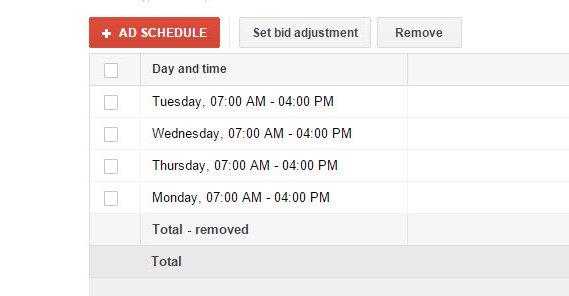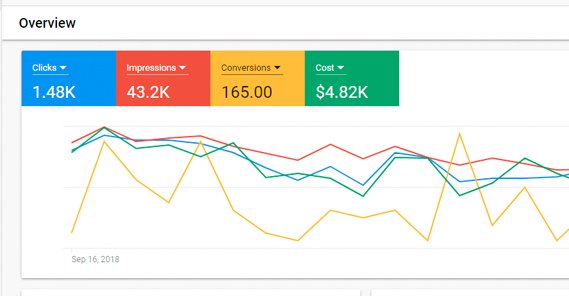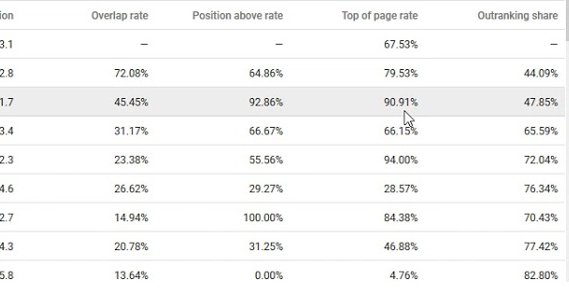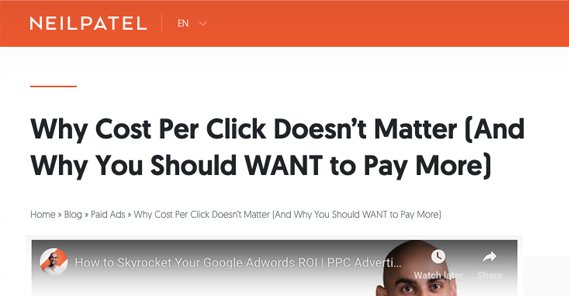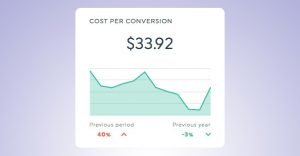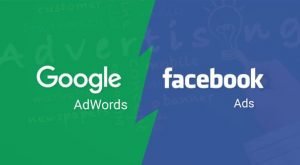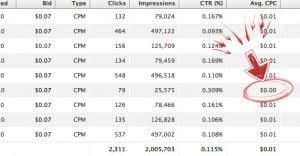Are PPC Ads More Expensive During Certain Months?
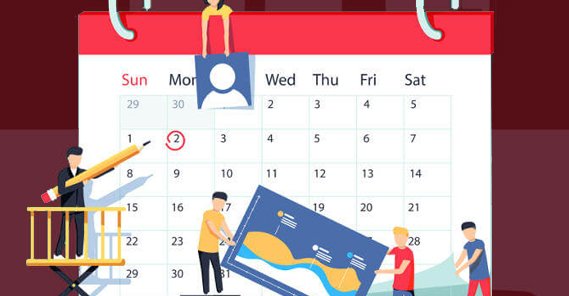
It’s no secret that there are a lot of different factors that tweak the cost of your PPC ads. Everything from your target audience to your ad copy will impact how much you have to spend, and the only hard limitation is the amount of money you have available.
Here’s a question: how much does time impact the cost of PPC advertising?
Time definitely has an impact, in several different ways. Let’s look at those different ways.
Time of Day Impacts Costs
First up, we can consider the smallest amount of time that, in a discrete block, can show variations in ad pricing. For most ad systems, this is hour by hour.
With PPC ads, many systems now offer something called Dayparting. Dayparting is the concept of parting out the day, or dividing it up and scheduling your ads hour by hour.
You know your customers have jobs and lives, so you know there are times of day when they are likely to be browsing the web, and other times where they are less likely to be browsing. For example, if your target audience is a very traditional family, you might have qualities like these:
- Your audience is browsing your site around 8am on their commute to work.
- Your audience is not browsing your site between 9am and 11am while they work.
- Your audience is browsing your site around noon during their lunch break.
- Your audience is not browsing your site between 1pm and 5pm while they work.
- Your audience is browsing your site around 5pm on their commute home.
- Your audience is not browsing your site around 6pm while they eat dinner with their family.
- Your audience is browsing your site around 7pm during their post-dinner break.
Now, this assumes your audience is the kind of people who have a family and a regular 9-5 job, which is not always the case. It’s just an example for educational purposes.
With Dayparting, you can schedule your ads to show to your audience during the hours when they’re most likely to be browsing, and turn them off during hours when they’re not likely to be browsing.
To reach users during the low volume times, you typically have to pay more. Dayparting saves you some money, then, because you’re only reaching your audience when they’re most available and cheapest to reach.
Time of day isn’t the only chunk of time that can impact the cost of your ads, however.
Day of the Week Impacts Costs
In addition to the time of day, you also have to consider what day of the week you’re running your ads. Different businesses tend to have different audience performance cues, so you need to know when your audience is most active.
Let’s say you’re a company selling recreational equipment for the water. Everything from kayaks to scuba gear to life jackets and swim suits. You may see some common trends for what days of the week people are searching for your content.
Monday, people aren’t all that likely to be looking for your items, because they’re primarily just looking at the long work week ahead.
Tuesday, likewise, people aren’t too likely to be looking for most of your items. Some users who like to swim for exercise may be looking for relevant items, but most of your inventory is not of interest.
Wednesday, as the hump day in the middle of the week, tends to attract a bit above average attention because people are starting to fantasize about their upcoming weekends and what they might need.
Thursday may be lower than Wednesday, but higher than Monday and Tuesday, because the weekend is almost here and some users are starting to actively plan weekend trips and getaways.
Friday is when interest starts to spike. Some people are off early and are looking to buy equipment for their weekend. Some people are just looking to prepare for Saturday.
Saturday is high volume, high traffic, high interest. The people who researched on Friday are making purchases, and the people who are embarking on last-minute excursions need to make their purchases as well.
Sunday is lower volume, but still relatively high. People buy to prepare for the next weekend, some people still have day events to attend, but some are done for the weekend.
As with Dayparting, the higher volume times often mean lower costs because there’s more of an audience to reach. On the other hand, if you have a lot of competition in your niche, the higher volume times can also mean increased costs. Your competition is bidding for that same traffic, and auctions are competitive. You need to spend more to reach people in a preferential position over your competition.
Month of the Year Impacts Costs
If the time of day and the day of the week both impact costs, why wouldn’t the month? Indeed, some months tend to be more expensive than others. The thing is, it’s not always the same months for every business.
For example, a business that sells school supplies is going to be busiest in July and August, when schools are picking up, back to school sales are in full swing, summer break is ending, and parents need to pick up school supplies for their children. This is when office stores and the school departments for various online retailers do a lot of their business.
Costs for those businesses rise during those months because there’s a lot of competition and a lot of demand for those items. Again, since advertising is almost always run by auction, the more competition you have, the higher you need to bid to get the volume you want to see.
Conversely, a store that sells primarily gifts and Christmas ornaments year-round – and yes, they exist – will see a huge uptick in volume and demand in December. Christmas is generally a huge and expensive time for pretty much everyone, of course. Everyone is trying to sell their products as gifts, or sell incidental gift-related items. Competition is fierce in pretty much every niche as everyone struggles to reach their audiences as much as possible. A similar phenomenon occurs after Thanksgiving in late November, around Black Friday.
Not every business is affected that heavily by seasonality, though. An industrial lab equipment production company might not see much impact from month to month at all. It’s not like industrial research has seasonal swings, really. Though, these same companies may not be doing quite so much PPC advertising either.
Geographic Time Costs
Geotargeting impacts the costs of your ads too. When you’re a relatively smaller local business and you’re targeting the geographic region near your business, you can reach more qualified people for lower costs.
That’s not the only way that geographic targeting impacts costs, though. Time is also a factor. For example, if you’re targeting Boston-local audiences, the time surrounding the Boston Marathon is going to be a higher volume time, which means higher costs as more businesses – including a lot of transient businesses that don’t normally target a regional Boston audience – are targeting that region.
Large events with national or global significance, even when they aren’t holidays, can have an impact on advertising costs. In our current capitalist society, everything is commercialized, and every event becomes an excuse to hold a specialized sale with specialized advertising. If you’re not doing it, someone is, and that someone may be your competitors.
Non-Time Related Factors
I may have made it sound like it’s fairly clear when your costs are rising and when they aren’t, but the reality is, it’s a muddy world out there. Costs rise and fall on a daily or hourly basis, and there may not be a rhyme or reason to it.
The presence of competition is a big factor in how much your ads will cost, and it will rise and fall almost unpredictably. If your costs suddenly go up, who knows, maybe a new competitor hit the scene, or maybe an old competitor decided to invest more as a lead-up to a sale or product launch. This might not have anything to do with what month it is.
Advertising costs can be dramatically impacted by political changes as well, and those don’t follow any pattern. Any time Trump decides to initiate or threaten a trade war with China, Mexico, Europe, or whoever else he happens to be mad at that week, stocks rise and fall, businesses suffer, and advertising costs have to adjust to compensate. You may not feel like your business is directly affected by tariffs from Mexican imports, but your customers may be, and if they suddenly have less potential disposable income, you’re going to have a harder time getting those clicks.
Large weather systems and natural disasters can also impact advertising costs. A huge hurricane in the Gulf will make advertising to Gulf regions very difficult, particularly in the immediate aftermath when cell service and power are sporadic. Other disasters, like Tsunamis and earthquakes in foreign lands, can impact imports and have a similar effect to political jockeying.
And, of course, there’s always the major factors that have nothing to do with time at all. The industry your business is in may have seasonal rises and falls, but that’s to be expected. Different industries have different costs.
Additionally, your choice of keyword targeting for your ads will have a dramatic impact. Finding the right high-volume long tail keywords with minimal competition can give you very low costs for your ads. Conversely, trying to target high volume primary keywords means you’ll be spending a ton of money just to get a tiny slice of the pie.
Why Costs Aren’t Important
So here’s the thing: the specific cost of your PPC ads isn’t really that important. Sure, the cost of your ads does matter from a purely monetary standpoint, but it’s just a component of what makes a good ad. Look at these two situations and tell me which one is better:
- You have a budget of $100. You have a keyword that costs $1 per click. You have a 10% conversion rate. You earn 10 conversions out of 100 clicks, meaning your cost per conversion is $10.
- You have a budget of $100. You have a keyword that costs $2.50 per click. You have a 50% conversion rate. You earn 20 conversions out of 40 clicks, meaning your cost per conversion is $5.
The more expensive ads in this scenario earn you fewer clicks within your budget, but more of those people convert, meaning your clicks are of higher quality. Going for the cheaper ads doesn’t get you more profits at all. I’ve talked about this before when discussing penny clicks, and I’m not alone in recommending looking at the more expensive ads. Neil Patel is here to remind you that the cost per click is irrelevant; what you really need to care about is cost per acquisition.
So, to sum everything up: yes, the month of the year will have an impact on the cost of your ads. That’s simple human nature; there’s seasonal swings in culture, and those swings will be commercialized. The more businesses there are targeting your keywords and your audience, the more you’re going to have to pay to be part of the pack that’s doing the advertising. However, the raw cost of the ads isn’t what should concern you, so much as the cost to profit ratio.

 ContentPowered.com
ContentPowered.com
